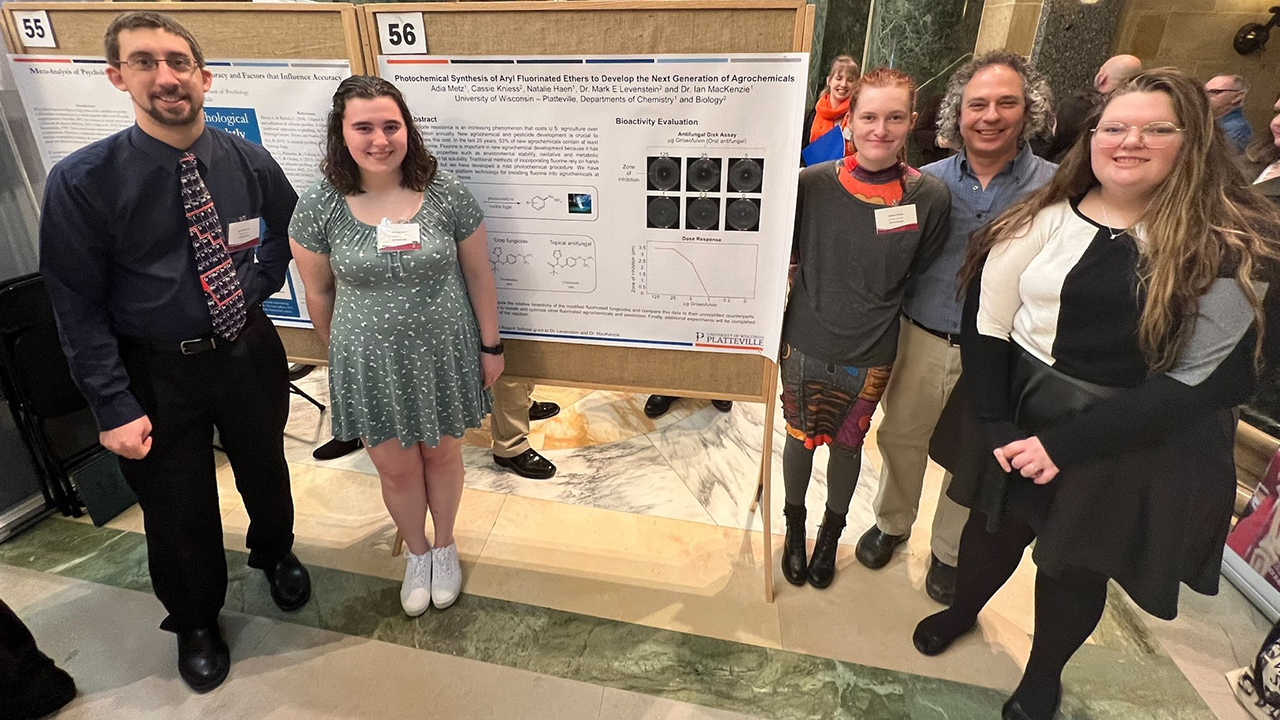
Three University of Wisconsin-Platteville students have been working on an increasingly vital area of study in agriculture, researching ways to develop new agrochemicals for crop protection.
Because fluorine-containing chemicals are more biologically active and remain active for longer periods of time, Natalie Haen, Cassie Kniess and Adia Metz worked to further develop and produce aryl fluorinated ethers with enhanced fungicidal and pesticidal applications.
Mentored by Dr. Ian MacKenzie, assistant professor of chemistry, and Dr. Mark Levenstein, associate professor of biology, the group used light to create different molecules, specifically agrochemicals.
“We started with a known chemical and added a catalyst to help a reaction take place faster,” said Haen, a junior chemistry and forensic investigation major from Luxemburg, Wisconsin. “This was done by putting the chemical in a photoreactor, which shines light on the reaction to speed up the process.”
The group found mixed results. “Some of the molecules we expected to work did not react at all,” said Haen.
The group’s research, titled “Photochemical Synthesis of Aryl Fluorinated Ethers to Develop the Next Generation of Agrochemicals,” was showcased at the 19th annual Research in the Rotunda held on March 8 in the state Capitol, where they will present their findings to legislators, state leaders and peers from across the UW System.
To learn more about Research in the Rotunda, visit wisconsin.edu/research-in-the-rotunda/.